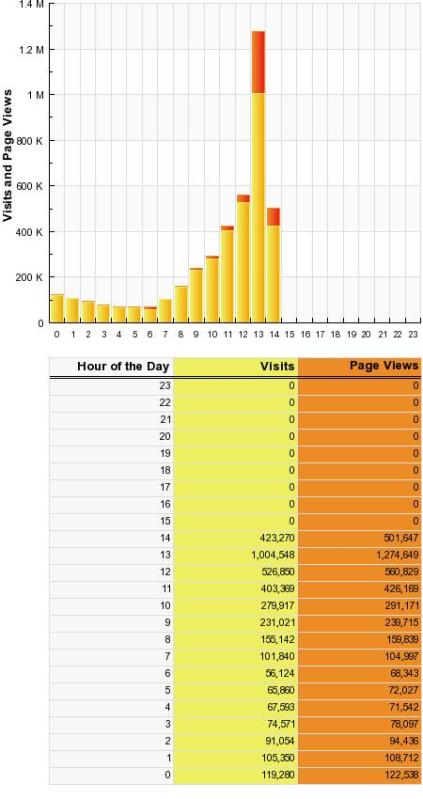 Why would someone turn away the potential for thousands of new followers?
Why would someone turn away the potential for thousands of new followers?
By the time Scripting News blogger Dave Winer was added to Twitter’s Suggested User List earlier this month there was no turning back from his headlong fusillade attack on its very existence. For months the blogging pioneer had criticized the arbitrary, corporate media-like structure of the SUL, publishing charts and an array of anecdotal observations about the nature of the list and how it affected the users who were placed within it. Of course it escaped nobody’s attention that being placed on it could result in a half million additional Twitter followers, and when you consider the fact that the number of followers correlates strongly not only with a user’s ability to drive traffic, but also his very authority and influence, it’s not surprising that the methodology for composing the list would come under close scrutiny. Winer arguably led the pack of scrutinizers, going so far as to suggest that Twitter employees would use the SUL to manipulate coverage of the company, drawing favorable coverage from those who made the list and punishing its harshest critics with removal.
Late last week, Winer wrote a post acknowledging the fact that he had been included on the list, and one could almost detect an attempt to fit this inclusion within the parameters of his criticism. “Since I found out I was there, I haven’t posted anything on my Twitter account,” he wrote, “because that’s a terrible place to discuss something like this, and until I decide what to do I want to be very clear about whether I’ve gained from being on the new list.” His hesitance to denounce his placement on the SUL had to do with the fact that Twitter had created a new one — or rather a series of new ones — each based on a different niche. According to somewhat vague reports, these new lists were somehow predicated on algorithms rather than human editorial control.
Ultimately, however, Winer concluded that these changes were not enough, and true to form, he wrote a note to Twitter and asked to be removed. “People might think that I held back criticism for Twitter if I got this boost from the company providing the communication platform,” he wrote. “I know this because I’ve already felt inclined to withhold criticism because getting the approval feels nice.”
Though he remained intellectually honest, it’s hard to imagine the mental tenacity it must take to contemplate the addition of hundreds of thousands of new followers and then reject it. Being included on the SUL could propel one into the stratospheric elite group of Twitter users who can direct thousands of click-throughs to an article or blog post. Given that Matt Drudge’s power has been largely attributed to his ability to drive readers to off-site destinations, anyone could recognize the power that the SUL bestows.
 But Winer wasn’t the only one to be placed on the SUL and then subsequently ask to be removed. Several months ago, NYU journalism professor Jay Rosen promptly requested his own removal from the list. Coincidentally, Rosen co-hosts a podcast with Winer called Rebooting the News.
But Winer wasn’t the only one to be placed on the SUL and then subsequently ask to be removed. Several months ago, NYU journalism professor Jay Rosen promptly requested his own removal from the list. Coincidentally, Rosen co-hosts a podcast with Winer called Rebooting the News.
“It just seemed arbitrary to me,” Rosen told me recently. “Poorly thought-through. That was my main objection … It had a ‘because we say so’ feel to it, so in that sense you could say it was akin to Big Media.”
Unlike Winer, however, the NYU professor didn’t have a suggested alternative to the current methodology for compiling the list. He agreed with some who have suggested that a large quantity of followers does not automatically equate to value. For instance, those who are introduced to the list are often new users, ones who have relatively few followers and may abandon their accounts before launching a single tweet, whereas most of Twitter’s early adopters and most influential users joined the site long before the SUL was in existence. “I was not convinced that the additional users following me were really following me,” he said. “And I knew I would lose any natural metric for how I was doing in building a constituency … I liked the growth curve I was on.”
Rosen said he wasn’t comfortable with tens of thousands of what he considered “unearned followers” and he didn’t want to forfeit his right to be critical of the SUL. “The harder I looked at it, the more I felt that even people in Twitter would eventually realize that the SUL was a mistake, and they did,” he said. ” … Follower growth was the closest thing they had to a reputation system and they distorted that system. [Twitter founder] Ev [Williams] admitted it was a mistake and contrary to how they want to run Twitter at the [Online News Association] where I was present, in the audience. He said we don’t think we should be making editorial decisions of that kind.”
But despite his reasons for removal, as with Winer I couldn’t help but wonder if there was any hesitancy in his decision. After all, even if the additional tens of thousands of followers were not high in quality, there is still a level of prestige and celebrity that coincides with a large number of followers. Seeing as how Rosen teaches journalism at NYU and has carved out a sub-niche in social media, surely his accomplishments in this medium — including a large follower list — could contribute positively to his career when it comes to salary raises, speaking fees, and other advancements. Were there any regrets?
“The only time I think that is when I am in an argument with someone who has 250,000 followers and I think he or she is very wrong … It’s just: ‘…why does he have a bigger megaphone than I do? Oh, right, Suggested User List.”
Follow me on Twitter

 Why would someone turn away the potential for thousands of new followers?
Why would someone turn away the potential for thousands of new followers? But Winer wasn’t the only one to be placed on the SUL and then subsequently ask to be removed. Several months ago, NYU journalism professor Jay Rosen promptly
But Winer wasn’t the only one to be placed on the SUL and then subsequently ask to be removed. Several months ago, NYU journalism professor Jay Rosen promptly 



